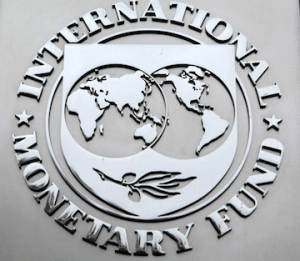Sub-Sahara Africa’s economy to slow at 1.5% – IMF
 The average growth for the Sub-Sahara Africa region is projected at a low 1.5 per cent, and it is the lowest in 20 years, the International Monetary Fund (IMF) has said.
The average growth for the Sub-Sahara Africa region is projected at a low 1.5 per cent, and it is the lowest in 20 years, the International Monetary Fund (IMF) has said.
According to the Regional Economic Outlook, sub-Saharan Africa Multispeed Growth Report, published in October 2016, the IMF believes that growth in sub-Saharan Africa is set to slow to its lowest level in more than 20 years.
“With lower commodity prices and a generally less supportive global economic environment, average growth in the region is foreseen to decelerate sharply to 1½ percent this year, well below population growth, and in sharp contrast to the high growth rates of the past 15 years,” it said.
The Fund indicates that while the projection is for a modest recovery for next year (to nearly 3 per cent), this is predicated on prompt action to address the large macroeconomic imbalances and policy uncertainty in some of the region’s largest economies.
“This aggregate picture, however, belies considerable heterogeneity in economic paths across the region,” it adds.
The Report notes that most of the non–resource-intensive countries—half of the countries in the region—continue to perform well, as they benefit from lower oil import prices, an improved business environment, and continuous strong infrastructure investment.
“Countries such as Côte d’Ivoire, Ethiopia, Kenya, and Senegal are foreseen to continue to grow at more than 6 per cent,” it said.
The IMF report states further that in contrast, commodity exporters are under severe economic strains, including the region’s three largest countries, Angola, Nigeria, and South Africa.
“The near-term prospects of oil exporters in particular have worsened, notwithstanding the modest uptick in oil prices, as the slowdown is becoming entrenched—activity among these countries is expected to contract by 1¼ per cent this year. Among other resource-intensive countries, growth in the Democratic Republic of Congo, Ghana, South Africa, Zambia, and Zimbabwe is decelerating sharply or stuck in low gear,” the report said.
However, in its April 2016 Regional Economic Outlook on the region, the IMF projected bright prospects for growth for sub-Saharan Africa in spite of persistent slowdown in growth owing to the slump in commodity prices and a more difficult global environment.
It indicated at that time that while there have been quite significant slowdown in some countries in sub-Saharan Africa, especially in resource-intensive countries, including Ghana, non-resource-intensive countries like Kenya, Senegal and Cote d’Ivoire have been able to maintain growth.
By Emmanuel K. Dogbevi
Copyright © 2016 by Creative Imaginations Publicity
All rights reserved. This news item or any portion thereof may not be reproduced or used in any manner whatsoever without the express written permission of the publisher except for the use of brief quotations in reviews.
